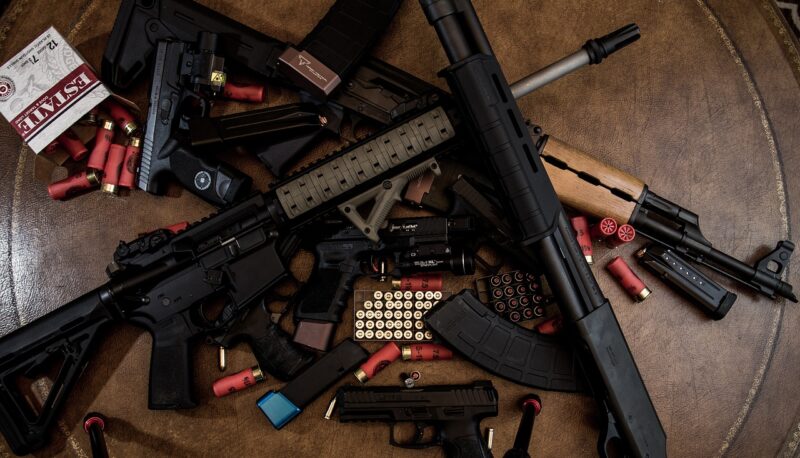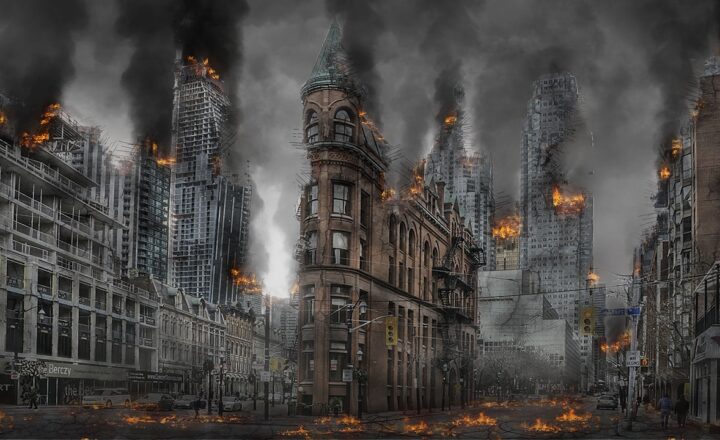How the AK-47 Became the World’s Most Recognizable and Widely Used Rifle
November 14, 2024

The AK-47, designed by Mikhail Kalashnikov, has become more than just a weapon; it is a symbol of revolution, resilience, and cultural identity. Despite being over seventy years old, its recognition and usage far exceed that of any other firearm. This article will explore the history, design, cultural significance, and global impact of the AK-47, elucidating how it has achieved this iconic status.
1. The Origin of the AK-47: A New Dawn in Firearm Development
The story of the AK-47 begins amidst the ashes of World War II. Mikhail Kalashnikov, a Soviet tank commander wounded in battle, sought to create a reliable and effective infantry rifle for soldiers. The design was completed in 1947, hence the name Avtomat Kalashnikova 1947.
Early models were extensively tested in the harsh conditions of the Russian front. The rifle was officially adopted by the Soviet Armed Forces in 1949, marking its entry into world militaries and setting the stage for its proliferation across the globe.
2. Unique Design Features of the AK-47
One of the pivotal reasons for the AK-47’s widespread use is its unique design features, which emphasize reliability, simplicity, and ease of use:
- Gas-Operated Mechanism: The AK-47 uses a gas-operated mechanism that allows it to eject spent cartridges seamlessly and load new rounds quickly, ensuring rapid fire capabilities.
- Durability: Built primarily from steel and wood, the AK-47 can withstand harsh environments, extreme weather conditions, and rough handling. Soldiers have reported that the rifle continues to function after being buried in mud or sand.
- Ease of Use: The weapon is intuitive, making it accessible to individuals with minimal training. This feature has contributed to its adoption by various armed forces and civilian militias worldwide.
- Interchangeable Parts: The AK-47’s design allows parts to be easily swapped out, facilitating repairs in field conditions without specialized tools.
These characteristics establish the AK-47 not only as an effective weapon but also as a practical choice for various armed forces.
3. Global Proliferation: From the Soviet Union to the World
The AK-47 quickly spread beyond the Soviet Union, becoming one of the most widely distributed firearms in history. During the Cold War, the Soviet Union supplied the rifle to various socialist allies and liberation movements, further enhancing its reach. Here are some key points that led to its global proliferation:
- Military Aid: The Soviet Union provided extensive military aid, including military training and firearms to countries like Cuba, Vietnam, and Angola, ensuring the AK-47 became a staple of their armed forces.
- Cultural Impact on Guerrilla Movements: The rifle became emblematic for various revolutionary movements, such as the Vietnam War and African independence movements, symbolizing resistance against colonial oppression.
- Ease of Manufacturing: Many countries began producing copies of the AK-47 due to its straightforward design, leading to variants made under different names in countries like China, India, and Egypt. This led to a saturation of AK-47-style rifles in many regional conflicts.
This widespread availability solidified the AK-47’s place in modern warfare, impacting countless conflicts around the globe.
4. Cultural Significance and Symbolism
The AK-47 has transcended its military roots to become a potent cultural symbol. Its image has been utilized in various forms of media and art:
- Media Representation: The AK-47 has appeared in films, literature, and music, often depicting themes of war, rebellion, and survival. Renowned movies like “Lord of War” and video games like “Call of Duty” reinforce its iconic status.
- Political Symbolism: The rifle has been adopted in flags and symbols of various organizations, epitomizing resistance and struggle against oppression. The revolutionary flag of Mozambique features an AK-47 crossed with a hoe, symbolizing the synergy between armed struggle and agriculture.
- Art and Music: Contemporary artists have used the AK-47 as a motif to address violence, identity, and the absurdity of war, reinforcing its emblematic power in modern society.
The AK-47 embodies a global narrative of conflict, resistance, and identity, captivating public attention beyond its functionality as a weapon.
5. The AK-47 in Modern Conflicts: A Double-Edged Sword
In modern conflicts, the AK-47 plays a significant role, both empowering and endangering communities. Here are some insights into its duality in recent warfare:
- Asymmetrical Warfare Tool: Insurgent and guerrilla groups widely use the AK-47 for its reliability and ease of use, making it a preferred choice for asymmetric warfare against well-trained armed forces.
- Criminal Use: The rifle’s proliferation is linked to rising crime rates; its accessibility makes it a weapon of choice for criminal organizations, leading to increased violence in several urban areas globally.
- Humanitarian Concerns: The massive supply of AK-47s has raised humanitarian concerns, especially in conflict zones where these weapons contribute to civilian casualties and prolonged violence. Organizations advocate for better regulation of small arms to mitigate the effects of such weapons on society.
Understanding the impact of the AK-47 on modern societies requires a nuanced perspective that considers both its historical significance and the ramifications of its availability.
6. Conclusion: The Enduring Legacy of the AK-47
The AK-47 is not merely a rifle; it is a cultural phenomenon embodying complex narratives of war, resistance, and survival. Its durability, reliability, and design continue to resonate in various contexts—from the battlefields of conflict zones to the discussions around gun control and conflict resolution.
The journey of the AK-47 is a testament to how weapons can transcend their original purpose and become emblematic of societal issues that persist within our global community. It serves as a stark reminder of the intertwined nature of culture, identity, and conflict, leaving an indelible mark on history that continues to be felt today.







